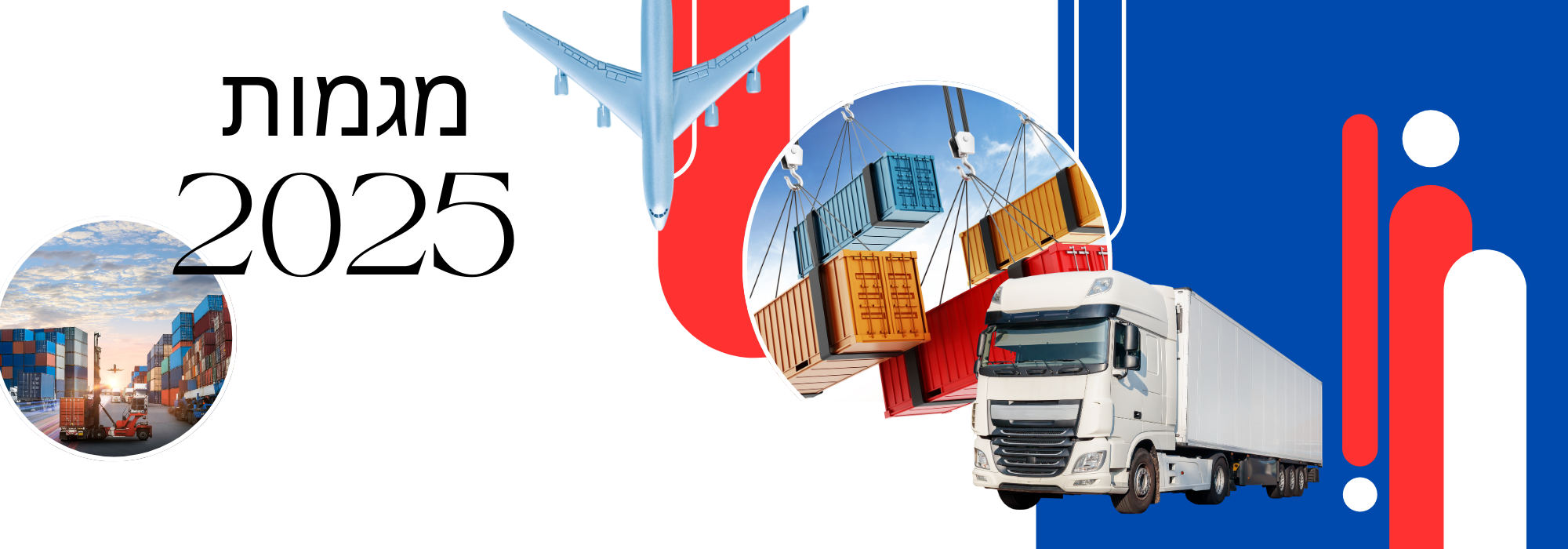In the intricate web of global commerce, navigating the waters of shipping solutions and customs clearance can be the key to unlocking unparalleled success for your business. Picture this: Your products seamlessly crossing borders, reaching eager customers worldwide with precision and efficiency. It’s not just a dream – it’s the reality that savvy entrepreneurs like you can achieve with the right knowledge at your fingertips.
Embark on a journey with us as we delve into the comprehensive guide that will revolutionize the way you approach logistics and customs processes. From streamlining shipping solutions to mastering the nuances of customs clearance, this blog post is your compass in the ever-evolving world of international trade. Say goodbye to uncertainties and bottlenecks, and embrace a future where your business thrives on a global scale. Welcome to a realm where all shipping solutions and customs clearance services for your business converge to pave the way for unprecedented growth and prosperity.
Understanding the Basics: Shipping Solutions and Customs Clearance
Before we dive into the intricacies of shipping solutions and customs clearance, it’s essential to understand the basics. Shipping solutions refer to the various methods and strategies businesses employ to transport their goods from one location to another. This can include air freight, sea freight, road transportation, or a combination of these options.
On the other hand, customs clearance involves complying with the regulations and requirements set by customs authorities when importing or exporting goods. It ensures that your shipments meet all legal obligations and are cleared for entry or exit from a country.
By having a solid understanding of these fundamentals, you can lay a strong foundation for your business’s logistics operations. Whether you’re just starting or looking to optimize your existing processes, knowing how shipping solutions and customs clearance work is crucial for success.
Choosing the Right Shipping Methods for Your Business
Selecting the appropriate shipping methods is vital in ensuring efficient delivery of your products while keeping costs under control. Factors such as the nature of your goods, destination, budget, and timeline all play a role in determining which method is best suited for your business.
Air freight offers speed and reliability but can be more expensive compared to other options. It’s ideal for time-sensitive shipments or products with high value-to-weight ratios. Sea freight, on the other hand, is more cost-effective but slower than air freight. It’s suitable for larger shipments that don’t require immediate delivery.
Road transportation is often used for domestic shipments or cross-border trade within neighboring countries. It provides flexibility and accessibility but may have limitations in terms of distance covered or certain types of goods transported.
By carefully evaluating these factors and understanding the pros and cons of each shipping method, you can make informed decisions that align with your business’s needs and goals.
International Shipping: Challenges and Opportunities
Expanding your business globally opens up a world of opportunities, but it also comes with its fair share of challenges. International shipping involves navigating complex logistics networks, dealing with customs regulations, and managing potential language barriers.
One of the key challenges is understanding and complying with the customs regulations of different countries. Each country has its own set of rules regarding import duties, taxes, documentation requirements, and prohibited items. Failing to adhere to these regulations can result in delays, fines, or even seizure of your goods.
However, with these challenges come opportunities for growth and expansion. By successfully overcoming the hurdles associated with international shipping, you can tap into new markets, reach a broader customer base, and increase your revenue streams.
Navigating Customs Regulations: Tips and Best Practices
To ensure smooth customs clearance processes, it’s crucial to familiarize yourself with the customs regulations of the countries you’re doing business with. Here are some tips and best practices to help you navigate this complex landscape:
1. Research and Stay Updated: Regularly monitor changes in customs regulations to avoid any surprises or non-compliance issues. Keep track of updates from relevant government agencies or seek assistance from experts in international trade.
2. Accurate Documentation: Complete all required paperwork accurately and thoroughly. This includes invoices, packing lists, certificates of origin, permits/licenses (if applicable), and any other relevant documents specific to your products or destination country.
3. Harmonized System (HS) Codes: Classify your products using HS codes – a standardized system for categorizing goods internationally. Accurate classification ensures proper assessment of duties and taxes while avoiding delays or penalties.
4. Partner with Customs Brokers: Consider engaging the services of experienced customs brokers who can guide you through the complexities of customs clearance. They have the expertise to handle documentation, communicate with customs authorities, and expedite the process.
5. Compliance with Trade Agreements: Take advantage of any preferential trade agreements or free trade agreements that may exist between your country and your target markets. These agreements can provide benefits such as reduced tariffs or streamlined customs procedures.
By following these tips and best practices, you can navigate customs regulations more effectively, minimize delays, and ensure a smoother customs clearance process for your shipments.
The Role of Documentation in Customs Clearance
Documentation plays a crucial role in customs clearance processes. It serves as evidence of the transaction between you and your trading partners and provides necessary information for customs authorities to assess duties, taxes, and compliance with regulations.
Some essential documents commonly required for customs clearance include:
– Commercial Invoice: This document provides details about the goods being shipped, including their description, quantity, value, and terms of sale.
– Packing List: A packing list itemizes each package within a shipment and provides information on weight, dimensions, contents, and packaging materials used.
– Bill of Lading/Airway Bill: These documents serve as receipts issued by carriers (shipping lines or airlines) confirming receipt of goods for transportation. They also act as evidence of ownership or control over the goods during transit.
– Certificates/Permits/Licenses: Depending on the nature of your products or destination country’s requirements, you may need additional certificates (e.g., phytosanitary certificates for agricultural products) or permits/licenses (e.g., import/export licenses).
Ensuring that your documentation is accurate, complete, and compliant with customs regulations is essential for a smooth customs clearance process. Any discrepancies or missing information can lead to delays or even rejection of your shipment.
Leveraging Technology for Efficient Shipping and Customs Processes
In today’s digital age, technology plays a pivotal role in streamlining shipping and customs processes. Here are some ways you can leverage technology to enhance efficiency:
1. Automated Shipping Solutions: Utilize shipping software or platforms that automate various aspects of the shipping process, such as rate comparison, label generation, tracking, and documentation management.
2. Electronic Data Interchange (EDI): Implement EDI systems to exchange electronic documents with trading partners and customs authorities. This reduces manual data entry errors, speeds up communication, and improves accuracy.
3. Customs Management Systems: Invest in customs management software that helps you manage compliance requirements, track shipments in real-time, generate necessary documents automatically, and stay updated on changes in regulations.
4. Track-and-Trace Technologies: Utilize technologies like GPS tracking or RFID tags to monitor the location and condition of your shipments throughout the supply chain. This provides visibility and enables proactive management of any potential issues.
5. Data Analytics: Leverage data analytics tools to gain insights into your shipping operations’ performance. Analyzing key metrics can help identify areas for improvement, optimize costs, and enhance overall efficiency.
By embracing technology-driven solutions tailored to your business’s needs, you can streamline processes, reduce manual errors, improve visibility into your supply chain, and ultimately enhance customer satisfaction.
Risk Management in Global Logistics: Ensuring Compliance
Global logistics inherently involves various risks, including compliance-related risks. Non-compliance with customs regulations can lead to penalties, shipment delays, reputational damage, or even legal consequences.
To mitigate these risks and ensure compliance, consider implementing the following risk management strategies:
1. Internal Controls: Establish robust internal controls to ensure adherence to customs regulations. This includes having clear policies and procedures in place, conducting regular audits, and providing training to employees involved in shipping and customs processes.
2. Due Diligence: Conduct thorough due diligence on your trading partners, suppliers, and service providers. Verify their compliance track record and reputation before engaging in business transactions.
3. Compliance Monitoring: Continuously monitor changes in customs regulations and update your processes accordingly. Regularly review your documentation practices, classification methods, and overall compliance measures.
4. Engage Legal Counsel: Seek legal advice from experts specializing in international trade law or customs regulations when necessary. They can provide guidance on complex issues or help resolve disputes with customs authorities.
5. Continuous Improvement: Treat risk management as an ongoing process rather than a one-time task. Regularly assess your risk exposure, identify areas for improvement, and implement corrective actions to enhance compliance.
By adopting a proactive approach to risk management and prioritizing compliance throughout your global logistics operations, you can safeguard your business’s reputation while minimizing potential disruptions.
Optimizing Costs and Time Efficiency in Shipping Solutions
In today’s competitive business landscape, optimizing costs while maintaining time efficiency is crucial for sustainable growth. Here are some strategies to achieve cost-effective shipping solutions:
1. Consolidation: Consolidate multiple smaller shipments into a single larger shipment whenever possible. This reduces transportation costs and maximizes container or cargo space utilization.
2. Negotiate Freight Rates: Engage in negotiations with shipping carriers or freight forwarders to secure favorable rates based on your shipping volume, frequency, and long-term partnerships.
3. Warehouse Optimization: Optimize your warehouse operations to minimize handling and storage costs. Implement efficient inventory management systems, adopt lean principles, and streamline order fulfillment processes.
4. Packaging Optimization: Optimize your packaging to reduce material costs and maximize space utilization. Use appropriate packaging materials that provide adequate protection while minimizing weight or volume.
5. Route Optimization: Utilize route optimization software or consult logistics experts to identify the most cost-effective shipping routes based on factors such as distance, transit times, tolls, and fuel consumption.
In addition to cost optimization, time efficiency is equally important in meeting customer expectations and gaining a competitive edge. By implementing strategies such as utilizing express shipping services for urgent orders or leveraging technology for real-time tracking, you can ensure timely delivery while maximizing operational efficiency.
Customer Satisfaction: Delivering a Seamless Experience
In the realm of global commerce, customer satisfaction is paramount for building long-lasting relationships and fostering business growth. To deliver a seamless experience to your customers throughout the shipping process, consider the following:
1. Clear Communication: Keep your customers informed about their shipment’s status through proactive communication channels such as email notifications or online tracking portals.
2. Transparency in Pricing: Clearly communicate all applicable charges upfront – including shipping fees, customs duties/taxes (if any), and any additional fees related to the destination country’s regulations.
3. Efficient Returns Process: Establish a streamlined returns process that is easy for customers to navigate. Provide clear instructions, pre-paid return labels (if feasible), and prompt refunds or exchanges.
4. Customer Support: Offer responsive customer support channels to address any queries or concerns your customers may have regarding their shipments. Promptly resolve issues and provide timely updates on resolutions.
5. Continuous Improvement: Regularly gather feedback from your customers to identify areas for improvement in your shipping processes. Actively seek ways to enhance the overall customer experience and implement necessary changes accordingly.
By prioritizing customer satisfaction throughout the shipping journey, you can differentiate your business from competitors, build trust, and foster loyalty among your customer base.
Conclusion: Empowering Your Business Through Effective Shipping Solutions and Customs Clearance
In conclusion, unlocking success in global commerce requires a deep understanding of shipping solutions and customs clearance processes. By choosing the right shipping methods, navigating customs regulations effectively, leveraging technology, managing risks, optimizing costs and time efficiency, and prioritizing customer satisfaction – you can empower your business to thrive on a global scale.
Remember that all shipping solutions and customs clearance services for your business converge at the intersection of knowledge, strategy, and execution. Embrace this comprehensive guide as your compass in the ever-evolving world of international trade – where opportunities abound for those who are prepared to seize them.


















